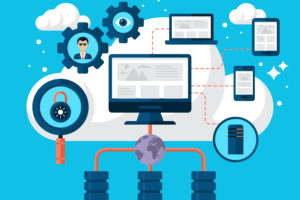Implementing new technology is one reason why many business owners are behind the curve. Because new technology leads to an office slowdown, tension, and confusion, business owners stick to outdated systems — systems that don’t work correctly, don’t offer the latest features, and are vulnerable to cyberattacks.
If you’re ready to upgrade your workplace to more efficient, better-working systems, here’s how to implement new technology without the accompanying frustration.
1) Put the work and research in
Before you commit to any new technology — whether it’s software or hardware — make sure you’ve explored the best options available. This means researching alternatives, meeting with vendors, and consulting your IT team or outside experts.
Need expert guidance on what technology is right for your business? Our Project & Consulting Services help you assess, plan, and implement tech upgrades with confidence.
2) Ensure you have support
Most new software programs come with some kind of digital help center. These help centers allow employees to quickly search their questions, or connecting them with a virtual help-desk staffed with agents. Ensuring that employees know how to access these helpful resources can make the difference between a stalled implementation and a successful one.
With our Remote IT Support, your employees have access to real-time help whenever they need it. No question goes unanswered, and no downtime is left unresolved
3) Set clear goals
Have concrete “drop dead” dates to make it clear that the new technology is being implemented, and when it’s getting implemented. This eliminates confusion and allows people to transition to the new tech. If possible, discontinue support for the old technology to prevent stragglers.
Establishing deadlines and milestones ensures smooth transitions. Having a “go-live” date prevents overlap and forces a shift from the old systems to the new.
To ensure your rollout is smooth and your tech stays updated, our Managed Services provide continuous IT support and maintenance after implementation.
4) Get feedback
After implementation, it’s important to have a safe, supportive open forum for people to express their confusions, frustrations, and gains that come from using the new tech. By allowing others to voice their complaints publicly, you can gain support from other employees and target areas where education and usability can be improved.
Give your team space to share their thoughts and questions. Not only does this create a more open tech culture, but it also uncovers areas where additional training might be helpful.
Need help keeping your users engaged and comfortable during transitions? Our Customer Engagement support ensures users feel heard, guided, and supported every step of the way.
5) Leave time for adjustments
Depending on the technical literacy of your employees, it can take some time to adjust to new systems and technology. You should be compassionate towards some small delays in productivity as everyone moves forward. Be patient — the result will be an improved workforce.
The Bottom Line
Tech transitions come with a learning curve. Be patient — and trust that performance will improve over time as employees adapt.
Implementing new technology doesn’t have to be frustrating, and your business doesn’t have to stay stuck in the past. Use these five steps to guide a smooth tech transition — and if you need expert help, we’re here to make it even easier.
Vodigy Networks is a trusted IT solutions provider serving the St. Paul and Minneapolis area. We specialize in helping small and medium-sized businesses navigate tech upgrades, IT planning, and ongoing support. Contact us today to get started!




